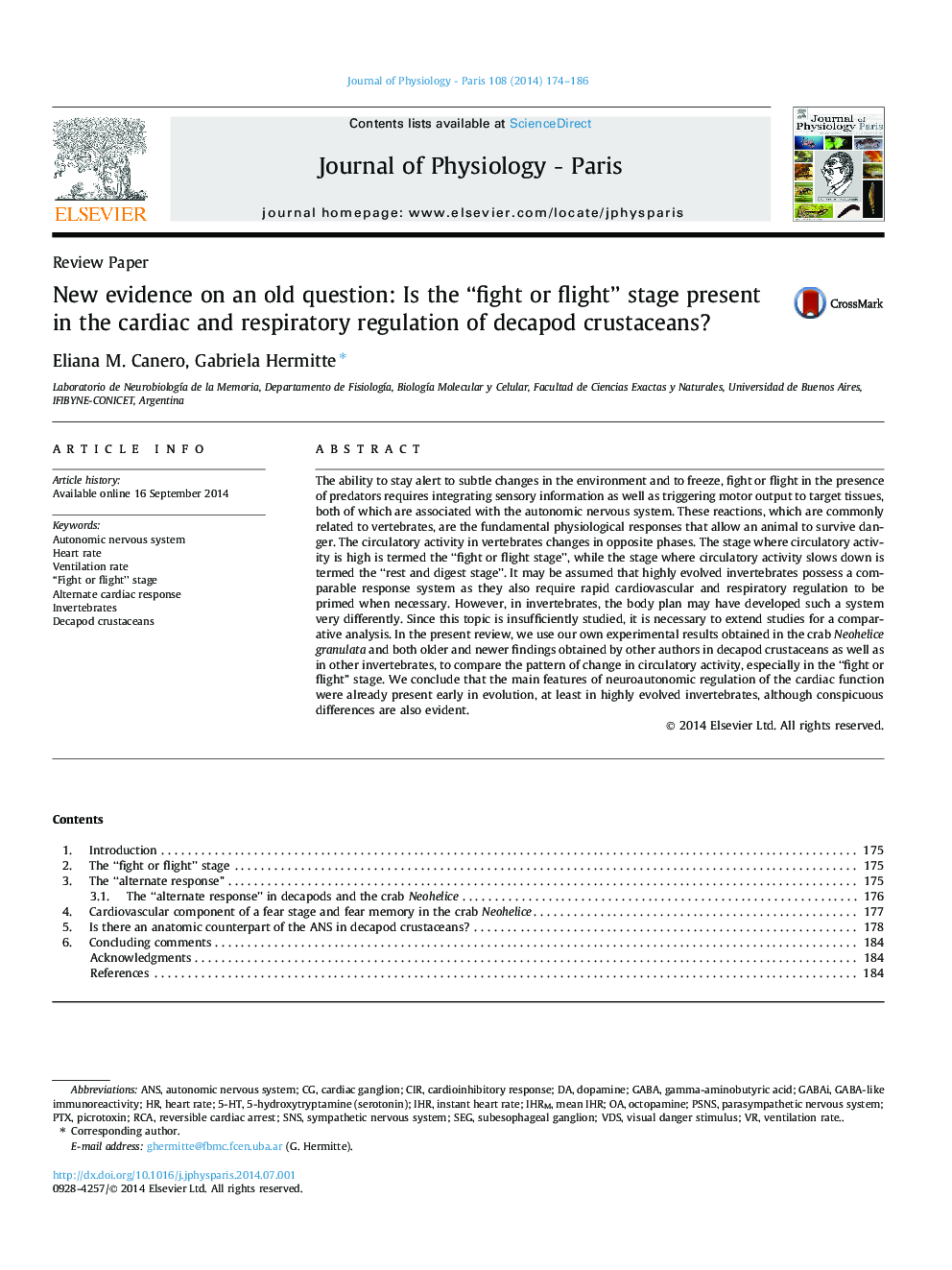| کد مقاله | کد نشریه | سال انتشار | مقاله انگلیسی | نسخه تمام متن |
|---|---|---|---|---|
| 2842251 | 1571024 | 2014 | 13 صفحه PDF | دانلود رایگان |
• Circulatory activity in vertebrates changes in opposite phases.
• The stage where circulatory activity is high is termed the “flight or fight stage”.
• Demonstration of “fight or flight” stage in decapods supports the idea of an autonomic-like control.
• However decapods engage in an alternate response where cardiac activity slows down.
• An anatomic counterpart of the autonomic nervous system (ANS) can be described in decapod crustaceans.
The ability to stay alert to subtle changes in the environment and to freeze, fight or flight in the presence of predators requires integrating sensory information as well as triggering motor output to target tissues, both of which are associated with the autonomic nervous system. These reactions, which are commonly related to vertebrates, are the fundamental physiological responses that allow an animal to survive danger. The circulatory activity in vertebrates changes in opposite phases. The stage where circulatory activity is high is termed the “fight or flight stage”, while the stage where circulatory activity slows down is termed the “rest and digest stage”. It may be assumed that highly evolved invertebrates possess a comparable response system as they also require rapid cardiovascular and respiratory regulation to be primed when necessary. However, in invertebrates, the body plan may have developed such a system very differently. Since this topic is insufficiently studied, it is necessary to extend studies for a comparative analysis. In the present review, we use our own experimental results obtained in the crab Neohelice granulata and both older and newer findings obtained by other authors in decapod crustaceans as well as in other invertebrates, to compare the pattern of change in circulatory activity, especially in the “fight or flight” stage. We conclude that the main features of neuroautonomic regulation of the cardiac function were already present early in evolution, at least in highly evolved invertebrates, although conspicuous differences are also evident.
Journal: Journal of Physiology-Paris - Volume 108, Issues 2–3, April–June 2014, Pages 174–186
